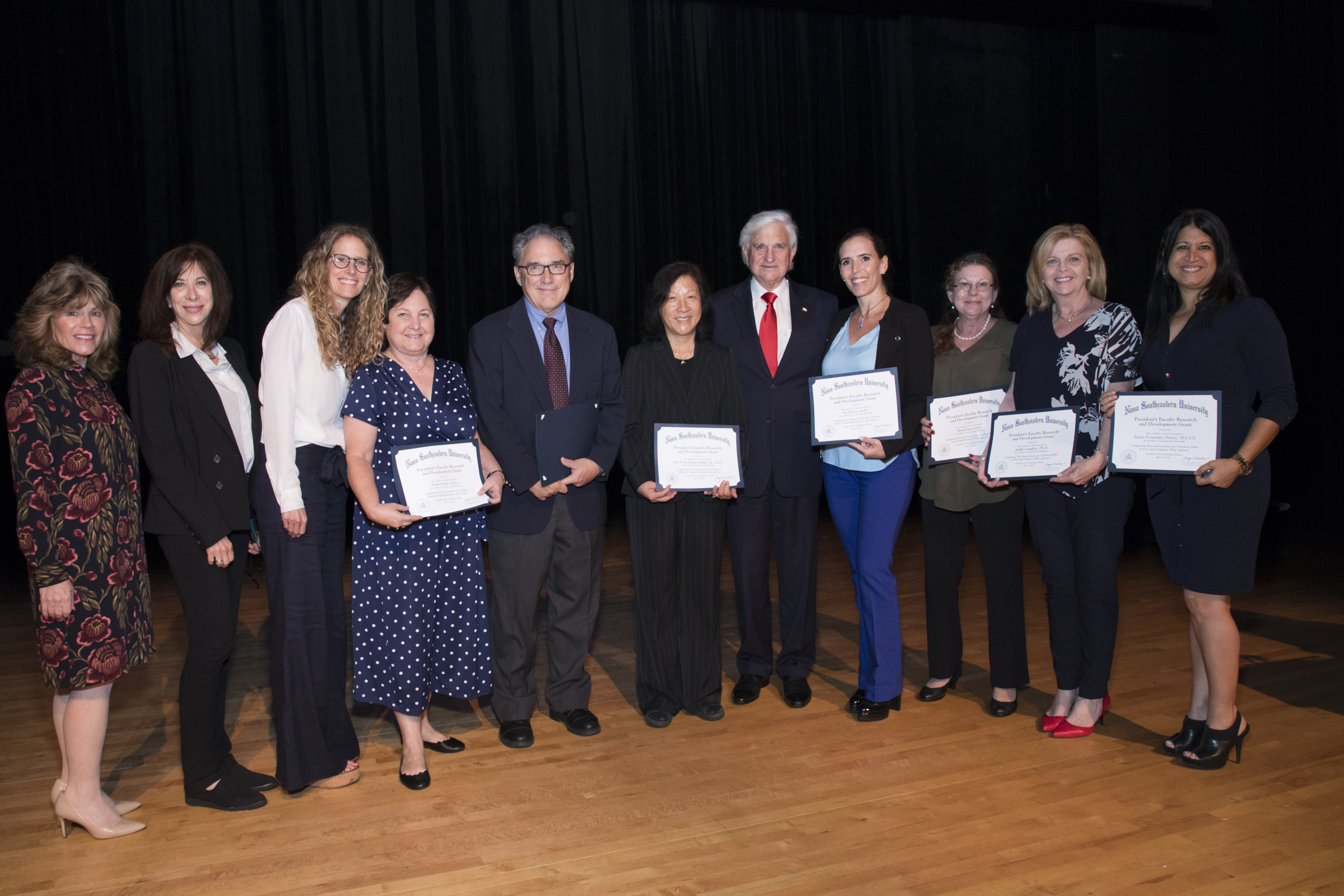Comparing Two Interventions for Teaching Math to Preschool Students With Autism
Grant Winners
- Hui Fang Su, Ed.D. – Abraham S. Fischler College of Education
- Susan Kabot, Ed.D. – Mailman Segal Center for Human Development
- Steven Terrell, Ph.D. – College of Engineering and Computing
- Nurit Sheinberg, Ed.D. – Mailman Segal Center for Human Development
- Jia Borror, Ed.D. – Abraham S. Fischler College of Education
- Taylor Klein – Halmos College of Oceanography and Natural Sciences
Deans
- Kimberly Durham, Psy.D. – Abraham S. Fischler College of Education
- Roni Leiderman, Ph.D. – Mailman Segal Center for Human Development
- Yong X. Tao, Ph.D., P.E., FASME – College of Engineering and Computing
Abstract

This study will compare two interventions for teaching math to preschool-aged students with autism spectrum disorder (ASD). The first is considered the business as usual (BAU) intervention, which uses the Strategies for Teaching Based on Autism Research (STAR) curriculum and discrete trial teaching as the instructional methodology. The second is the Math is Not Difficult (Project MIND) activity-embedded, naturalistic intervention. These interventions will be randomly assigned to four classrooms of preschool students with ASD and implemented over a period of three months for Project MIND and measurement gained during the same 3 months for the STAR intervention will be used. A quasi-experimental, pre-test/post-test design will be used to compare the effectiveness of these two interventions in building mathematical knowledge and skills. The pre-post measures include three standardized instruments: the Test of Early Math Ability-3, the Problem Solving and Calculation subtests of the Woodcock Johnson Test of Achievement IV, and the Bracken Test of Basic Concepts-3 Receptive. The STAR curriculum-based assessment is administered to all Baudhuin students three times per year and results will be used in this study. It is anticipated that the implementation of these two approaches will lead to improvement in the mathematical knowledge and skills of children with ASD, but it is important to see whether a behavioral or naturalistic teaching approach leads to greater results.
 This study will compare two interventions for teaching math to preschool-aged students with autism spectrum disorder (ASD). The first is considered the business as usual (BAU) intervention, which uses the Strategies for Teaching Based on Autism Research (STAR) curriculum and discrete trial teaching as the instructional methodology. The second is the Math is Not Difficult (Project MIND) activity-embedded, naturalistic intervention. These interventions will be randomly assigned to four classrooms of preschool students with ASD and implemented over a period of three months for Project MIND and measurement gained during the same 3 months for the STAR intervention will be used. A quasi-experimental, pre-test/post-test design will be used to compare the effectiveness of these two interventions in building mathematical knowledge and skills. The pre-post measures include three standardized instruments: the Test of Early Math Ability-3, the Problem Solving and Calculation subtests of the Woodcock Johnson Test of Achievement IV, and the Bracken Test of Basic Concepts-3 Receptive. The STAR curriculum-based assessment is administered to all Baudhuin students three times per year and results will be used in this study. It is anticipated that the implementation of these two approaches will lead to improvement in the mathematical knowledge and skills of children with ASD, but it is important to see whether a behavioral or naturalistic teaching approach leads to greater results.
This study will compare two interventions for teaching math to preschool-aged students with autism spectrum disorder (ASD). The first is considered the business as usual (BAU) intervention, which uses the Strategies for Teaching Based on Autism Research (STAR) curriculum and discrete trial teaching as the instructional methodology. The second is the Math is Not Difficult (Project MIND) activity-embedded, naturalistic intervention. These interventions will be randomly assigned to four classrooms of preschool students with ASD and implemented over a period of three months for Project MIND and measurement gained during the same 3 months for the STAR intervention will be used. A quasi-experimental, pre-test/post-test design will be used to compare the effectiveness of these two interventions in building mathematical knowledge and skills. The pre-post measures include three standardized instruments: the Test of Early Math Ability-3, the Problem Solving and Calculation subtests of the Woodcock Johnson Test of Achievement IV, and the Bracken Test of Basic Concepts-3 Receptive. The STAR curriculum-based assessment is administered to all Baudhuin students three times per year and results will be used in this study. It is anticipated that the implementation of these two approaches will lead to improvement in the mathematical knowledge and skills of children with ASD, but it is important to see whether a behavioral or naturalistic teaching approach leads to greater results.